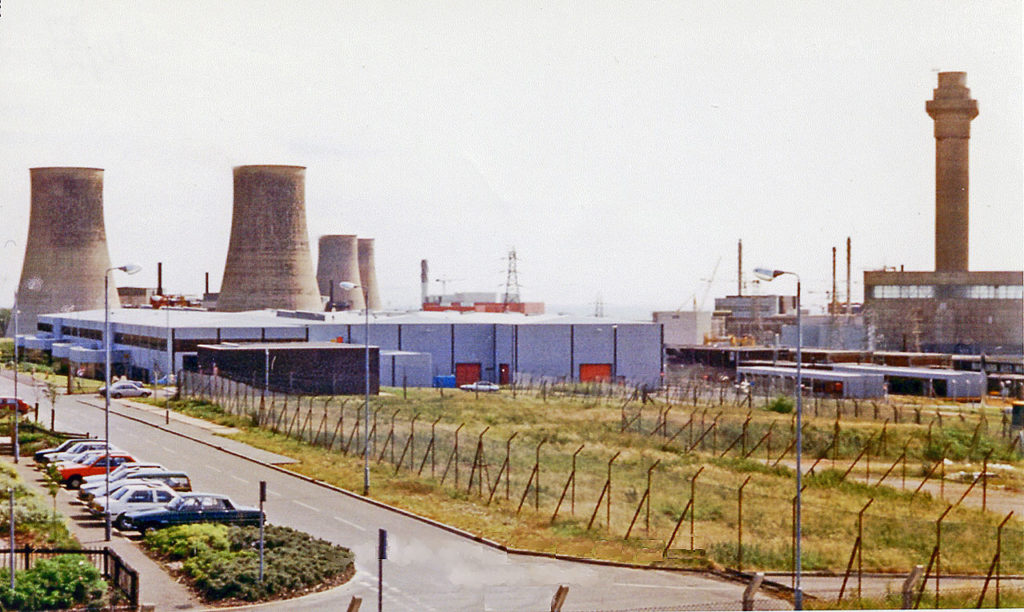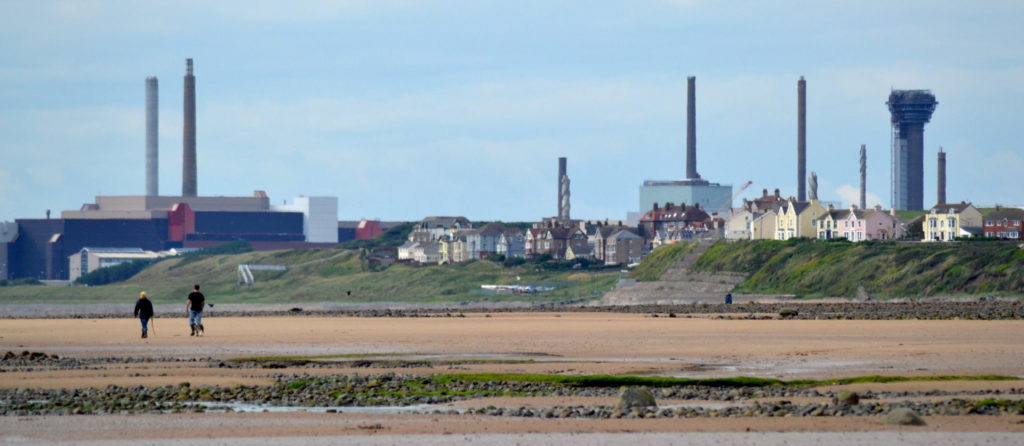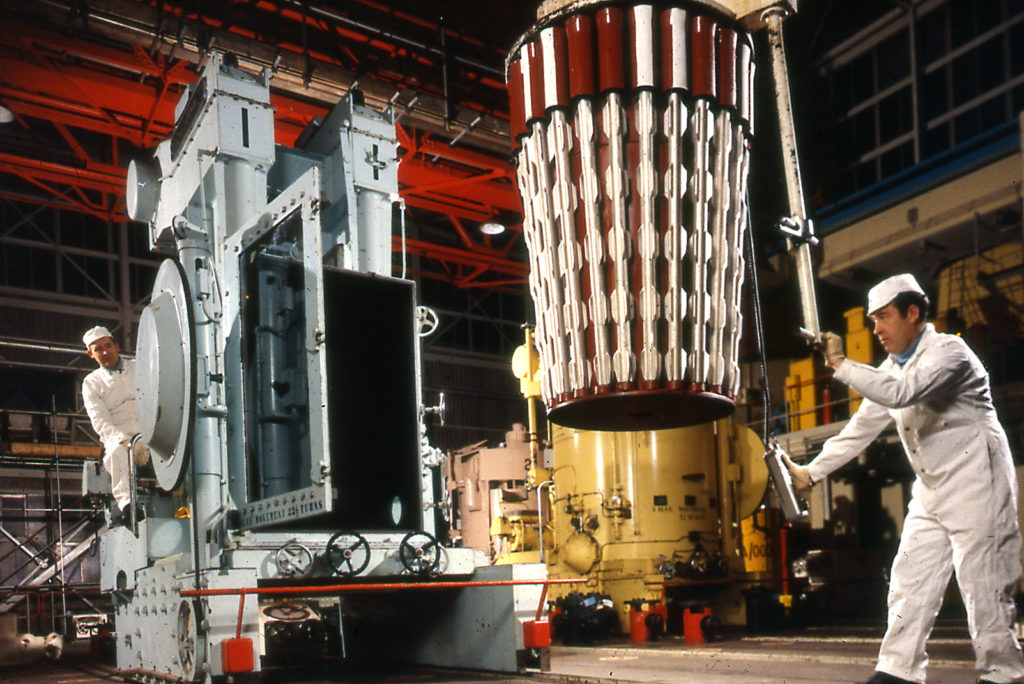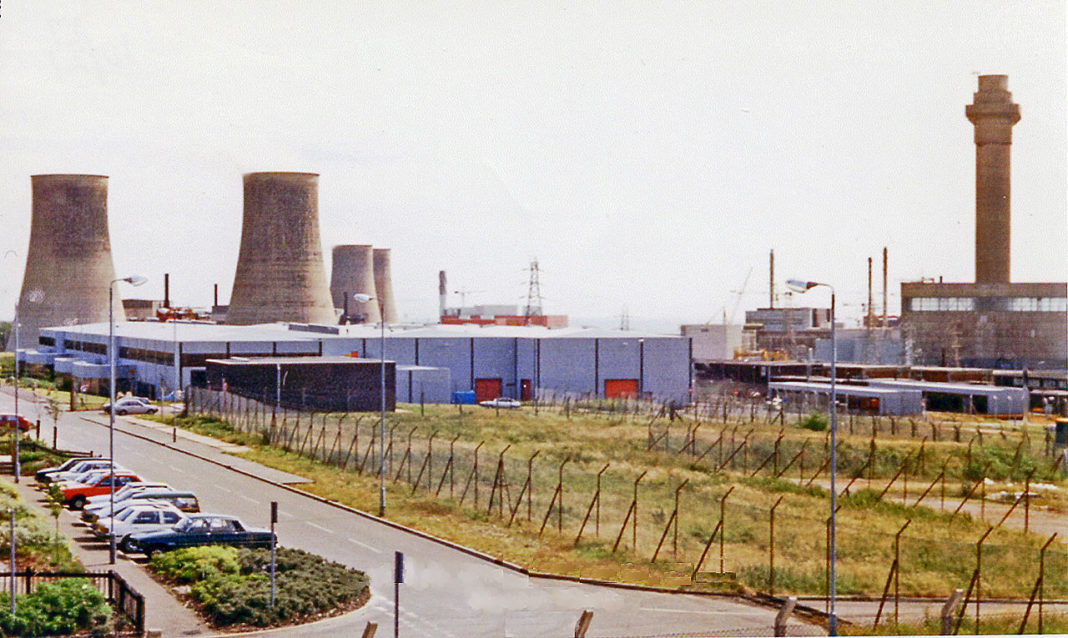Calder Hall Power Station was a pioneering nuclear power station located on the Sellafield site in Cumbria, England. It was the world’s first commercial nuclear power station to generate electricity on a large scale. Calder Hall began operations in 1956 and played a significant role in the early development of civil nuclear power.

It was decided by the UK Government to proceed with the civil nuclear power programme in 1952, and construction at Calder Hall began the following year. The station was designed by a team led by Christopher Hinton, Baron Hinton of Bankside.

Calder Hall initially had two cooling towers, with two further added at the opposite end of the power station in 1958 and 1959.

Calder Hall used Magnox reactors, a type of nuclear reactor that employed magnesium alloy as the material for the fuel cladding. The name “Magnox” is derived from “magnesium non-oxidizing.” The reactors used natural uranium as fuel and carbon dioxide as a coolant.
The reactors each weighed 33,000 tons, had four heat exchangers and 1,696 nuclear fuel channels. 8 x 3,000 rpm turbines, each 75 meters long, 20 meters wide and 25 meters high were installed to generate the electricity.
The station was closed on 31 March 2003, the first reactor having been in use for nearly 47 years. Decommissioning started in 2005.
Calder Hall’s legacy extends beyond its operational years. It demonstrated the feasibility of generating electricity from nuclear reactors, paving the way for the expansion of nuclear power globally. However, the Magnox reactors, including those at Calder Hall, have been succeeded by newer reactor designs in modern nuclear power plants.
The Sellafield site, where Calder Hall was located, has been historically associated with nuclear activities, including reprocessing of nuclear fuel. The site has undergone changes and decommissioning efforts over the years.
According to the Internet














